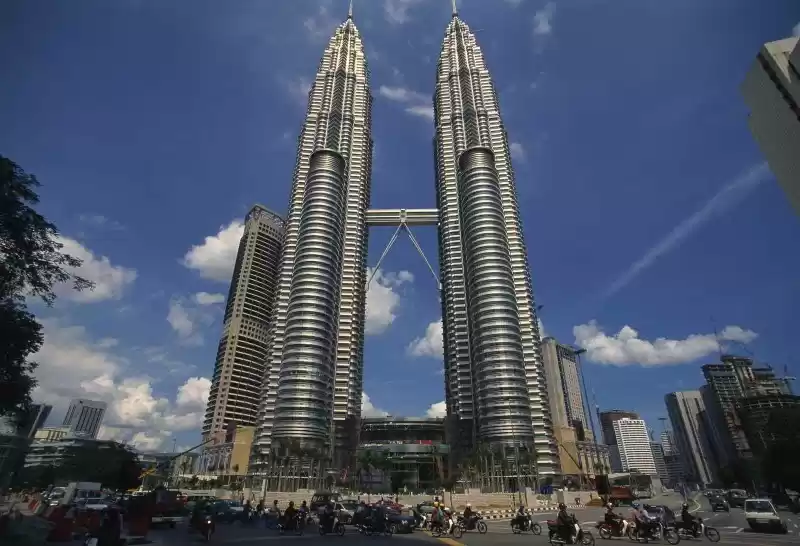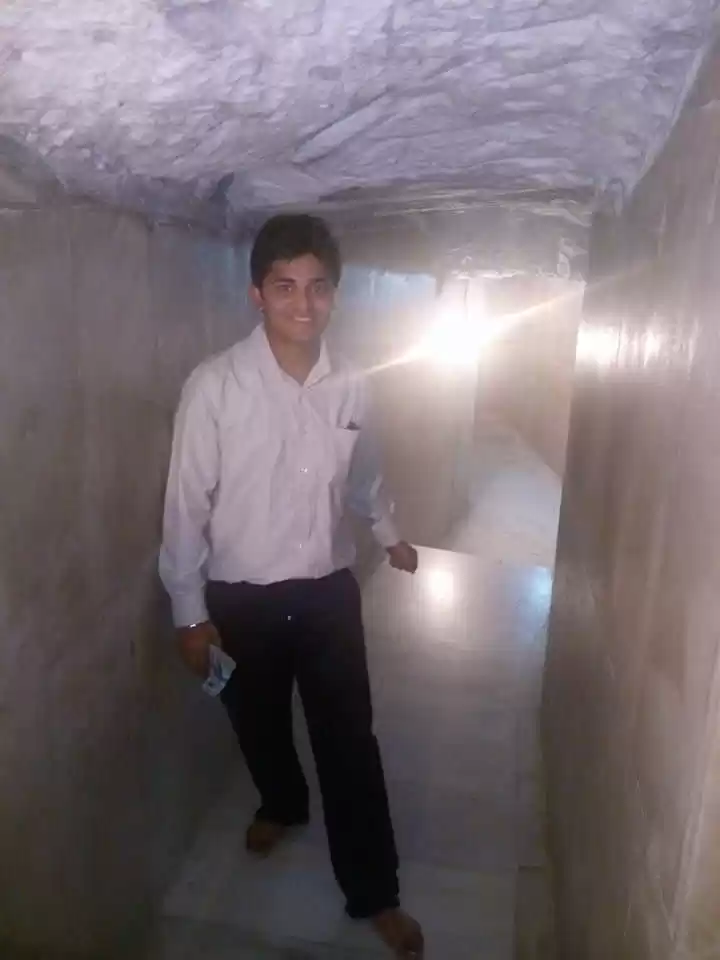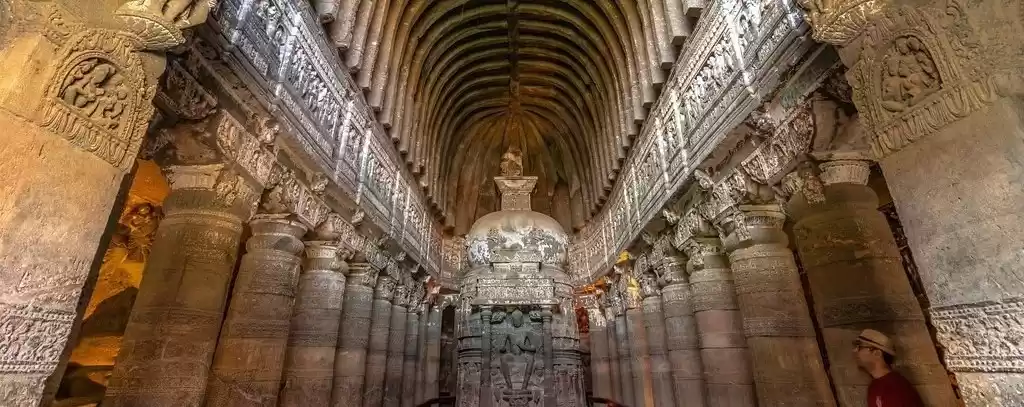If you are looking for a unique and memorable experience in Malaysia, you should not miss the Chin Swee Caves Temple, a magnificent temple located in the Genting Highlands. This temple is not only a place of worship, but also a cultural and artistic treasure that showcases the rich heritage and diversity of Malaysia.
The Chin Swee Caves Temple is situated on a 28-acre plot of rocky forested land, about 4,600 feet above sea level. It offers a breathtaking view of the surrounding mountains, valleys, and rainforest. The temple complex consists of several buildings, statues, sculptures, and inscriptions that depict the teachings and stories of Buddhism, Taoism, and Confucianism.
The main attraction of the temple is the Journey to Enlightenment, a pathway that leads visitors through the 10 chambers of hell, the 18 levels of purgatory, and the nine-story pagoda, where they can witness the consequences of karma and the rewards of virtue. Along the way, visitors can also admire the 15-meter tall statue of Buddha, the nine-faced Guan Yin statue, and the black-faced Chin Swee statue, among others.
The temple also has a vegetarian restaurant that serves delicious Chin Swee cuisine, which is a fusion of Chinese, Malay, and Indian flavors. The restaurant is open daily from 9 am to 9 pm, and offers a variety of dishes, such as noodles, rice, curry, soup, and desserts.
The Chin Swee Caves Temple is a must-visit destination for anyone who wants to learn more about the history, culture, and spirituality of Malaysia, as well as enjoy the natural beauty and tranquility of the Genting Highlands. Whether you are a solo traveler, a couple, a family, or a group, you will find something to suit your interests and preferences at this temple.
History and Founder of the Temple
The Chin Swee Caves Temple was founded by Reverend Master Chin Swee, a Buddhist monk who was born in Fujian, China, in 1906. He was a renowned spiritual leader, philanthropist, and healer, who dedicated his life to spreading the teachings of Buddhism and helping the poor and needy.
Reverend Master Chin Swee came to Malaysia in 1926, and established the Chin Swee Association, a charitable organization that provided free medical services, education, and welfare to the local community. He also founded several temples, schools, and orphanages in Malaysia, Singapore, and Indonesia.
In 1976, Reverend Master Chin Swee had a vision of building a temple on a mountain top, where people could meditate and pray in peace and harmony. He chose the Genting Highlands as the ideal location, and acquired a piece of land from the late Tan Sri Lim Goh Tong, the founder of Genting Group.
However, the construction of the temple was delayed due to various challenges, such as the rugged terrain, the lack of funds, and the death of Reverend Master Chin Swee in 1989. It was only in 1994 that the temple was officially opened to the public, after more than 18 years of hard work and dedication by his disciples and followers.
The temple was named after Reverend Master Chin Swee, in honor of his contributions and legacy. Today, the temple is managed by the Chin Swee Temple Sdn Bhd, a subsidiary of the Genting Group, and is open to visitors of all faiths and backgrounds.
Highlights and Attractions of the Temple
The Chin Swee Caves Temple is a feast for the eyes and the soul, as it features a variety of stunning and meaningful attractions that reflect the essence and diversity of Malaysian culture and religion. Here are some of the highlights and attractions that you should not miss when you visit the temple:

The 10 Chambers of Hell:
This is the most famous and impressive attraction of the temple, as it depicts the 10 stages of punishment and torture that await the souls of the wicked in the underworld, according to Chinese folklore. The chambers are located in a dark and eerie cave, where visitors can see realistic and gruesome scenes of sinners being chopped, boiled, frozen, burned, and eaten by demons and beasts. The chambers also display the corresponding sins and crimes that lead to each chamber, such as murder, theft, adultery, corruption, and lying. The purpose of this attraction is to educate and warn visitors about the consequences of evil deeds, and to encourage them to repent and reform.
The 18 Levels of Purgatory:
This is the continuation of the 10 Chambers of Hell, as it shows the 18 levels of purification and redemption that the souls of the virtuous undergo in the afterlife, according to Buddhist doctrine. The levels are located in a bright and serene hall, where visitors can see peaceful and pleasant scenes of souls being guided, blessed, and rewarded by bodhisattvas and deities. The levels also display the corresponding virtues and merits that lead to each level, such as compassion, generosity, wisdom, and faith. The purpose of this attraction is to inspire and motivate visitors to practice good deeds, and to attain enlightenment and nirvana.
The Nine-Story Pagoda:
This is the centerpiece and landmark of the temple, as it stands majestically on the highest point of the temple complex, overlooking the scenic landscape of the Genting Highlands. The pagoda is a symbol of the harmony and integration of Buddhism, Taoism, and Confucianism, as it houses the statues and relics of the three religions. The pagoda also has a bell tower and a drum tower, where visitors can ring the bell and beat the drum for good luck and fortune. The pagoda is open daily from 7 am to 7 pm, and visitors can climb up to the top floor for a panoramic view of the surroundings.
The 15-Meter Tall Statue of Buddha:
This is the largest and most prominent statue of the temple, as it sits gracefully on a lotus throne, facing the main entrance of the temple. The statue is made of bronze, and weighs about 40 tons. It represents the historical Buddha, Siddhartha Gautama, who attained enlightenment under the Bodhi tree, and taught the four noble truths and the eightfold path to his disciples. The statue is surrounded by smaller statues of the 18 arhats, who were the original followers of the Buddha, and achieved the highest state of liberation. The statue is a symbol of the wisdom and compassion of the Buddha, and visitors can pay their respects and make offerings to the statue.
The Nine-Faced Guan Yin Statue:
This is the most unique and mysterious statue of the temple, as it depicts the bodhisattva of mercy and compassion, Guan Yin, with nine faces and 18 arms. The statue is made of white marble, and stands at about 12 meters tall. It is located in a secluded and quiet area of the temple, where visitors can feel the presence and power of the bodhisattva. The nine faces of the statue represent the nine emotions of human beings, such as joy, anger, sorrow, and fear, and the 18 arms represent the 18 methods of salvation that the bodhisattva uses to help all sentient beings. The statue is a symbol of the kindness and benevolence of Guan Yin, and visitors can pray and ask for her blessings and protection.
The Black-Faced Chin Swee Statue:
This is the most revered and sacred statue of the temple, as it portrays the founder and patron of the temple, Reverend Master Chin Swee, with a black face and a white beard. The statue is made of granite, and measures about 9 meters tall. It is located in the main hall of the temple, where visitors can see the portrait and relics of the master, as well as his disciples and successors. The black face of the statue signifies the master’s ability to see through the darkness and ignorance of the world, and the white beard signifies his longevity and purity. The statue is a symbol of the gratitude and respect that the temple and its devotees have for Reverend Master Chin Swee, and visitors can worship and honor the master and his teachings.
Practical Information and Tips for Visitors
The Chin Swee Caves Temple is a wonderful destination for travelers who want to experience the spiritual and cultural aspects of Malaysia, as well as enjoy the natural beauty and tranquility of the Genting Highlands. Here are some practical information and tips for visitors who plan to visit the temple:
How to reach:
The temple is easily accessible by car or by cable car, depending on your preference and budget. If you choose to drive, you can take the Karak Highway from Kuala Lumpur, and follow the signs to Genting Highlands. The temple is about 6 km before the peak of the mountain, and there is a free parking area near the temple. If you choose to take the cable car, you can board the Awana Skyway from the Awana Station, and alight at the Chin Swee Station, which is the second stop of the cable car. The cable car operates daily from 7 am to 12 am, and the fare is RM 9 per person for a standard gondola, and RM 50 per person for a glass-floor gondola.
Operating hours and entrance fee:
The temple is open daily from 7 am to 7 pm, and there is no entrance fee for visitors. However, donations are welcome and appreciated, as they help to maintain and improve the temple facilities and services. You can also purchase souvenirs, such souvenirs, such as books, CDs, DVDs, and statues, at the temple shop, which is open daily from 9 am to 6 pm.
Dress code and etiquette:
The temple is a sacred and respectful place, so visitors are advised to dress modestly and appropriately, and to avoid wearing shorts, skirts, sleeveless tops, or hats. Visitors are also expected to behave politely and quietly, and to refrain from smoking, drinking, eating, or littering within the temple premises. Visitors are also requested to follow the instructions and signs of the temple staff and volunteers, and to respect the beliefs and practices of the temple devotees.
Best time and season to visit:
The temple can be visited at any time of the year, as the weather in the Genting Highlands is generally cool and pleasant, with an average temperature of 18°C. However, the best time to visit the temple is during the festive seasons, such as Chinese New Year, Vesak Day, and Mid-Autumn Festival, when the temple is decorated with lanterns, flowers, and banners, and hosts various activities, such as prayers, ceremonies, performances, and fireworks. The temple is also more crowded and lively during these periods, so visitors can experience the festive atmosphere and spirit of the temple.
Nearby Attractions and Activities
The Chin Swee Caves Temple is not only a destination in itself, but also a gateway to other attractions and activities in the Genting Highlands and beyond. Here are some of the nearby attractions and activities that you can enjoy after visiting the temple:

Resorts World Genting:
This is the ultimate entertainment and leisure resort in Malaysia, where you can find a variety of hotels, casinos, theme parks, shopping malls, restaurants, and shows. Resorts World Genting is about 10 km from the temple, and you can reach it by car or by cable car. You can spend a whole day or more at this resort, as there is something for everyone, whether you are looking for thrill, fun, or relaxation. Some of the highlights of the resort are the Skytropolis Indoor Theme Park, the Genting Highlands Premium Outlets, the Awana Skyway, and the SkyAvenue.

Muzium Orang Asli:
This is a museum that showcases the history, culture, and lifestyle of the Orang Asli, the indigenous people of Malaysia. The museum is about 20 km from the temple, and you can reach it by car or by bus. You can learn more about the Orang Asli’s origins, traditions, beliefs, and crafts, as well as see their artifacts, tools, weapons, and costumes. The museum also has a gallery, a library, and a souvenir shop. The museum is open daily from 9 am to 5 pm, and the entrance fee is RM 5 per person.

Chiling Waterfalls:
This is a natural attraction that features a series of cascading waterfalls and pools, surrounded by lush greenery and wildlife. The waterfalls are about 30 km from the temple, and you can reach them by car or by taxi. You can hike along the river, cross several bridges, and swim in the clear and refreshing water. The waterfalls are also a popular spot for picnics, camping, and fishing. The waterfalls are open from Friday to Sunday, from 8 am to 6 pm, and the entrance fee is RM 1 per person.

Genting Strawberry Leisure Farm:
This is a farm that grows and sells fresh strawberries, as well as other fruits, vegetables, and flowers. The farm is about 40 km from the temple, and you can reach it by car or by taxi. You can pick your own strawberries, buy strawberry products, such as jam, juice, and ice cream, and visit the lavender garden, the mushroom farm, and the bee farm. The farm is open daily from 9 am to 6 pm, and the entrance fee is RM 8 per person.
The Chin Swee Caves Temple is a spiritual and cultural gem in Malaysia, that offers a unique and memorable experience for travelers who want to explore the history, culture, and religion of Malaysia, as well as enjoy the natural beauty and tranquility of the Genting Highlands. The temple is a place of worship, education, and inspiration, where visitors can learn, appreciate, and practice the teachings and values of Buddhism, Taoism, and Confucianism. The temple is also a gateway to other attractions and activities in the Genting Highlands and beyond, where visitors can have fun, adventure, and relaxation.
The Chin Swee Caves Temple is a destination that you should not miss when you visit Malaysia, as it will enrich your mind, body, and soul. Plan your trip and experience the temple for yourself. You will not regret it.





































